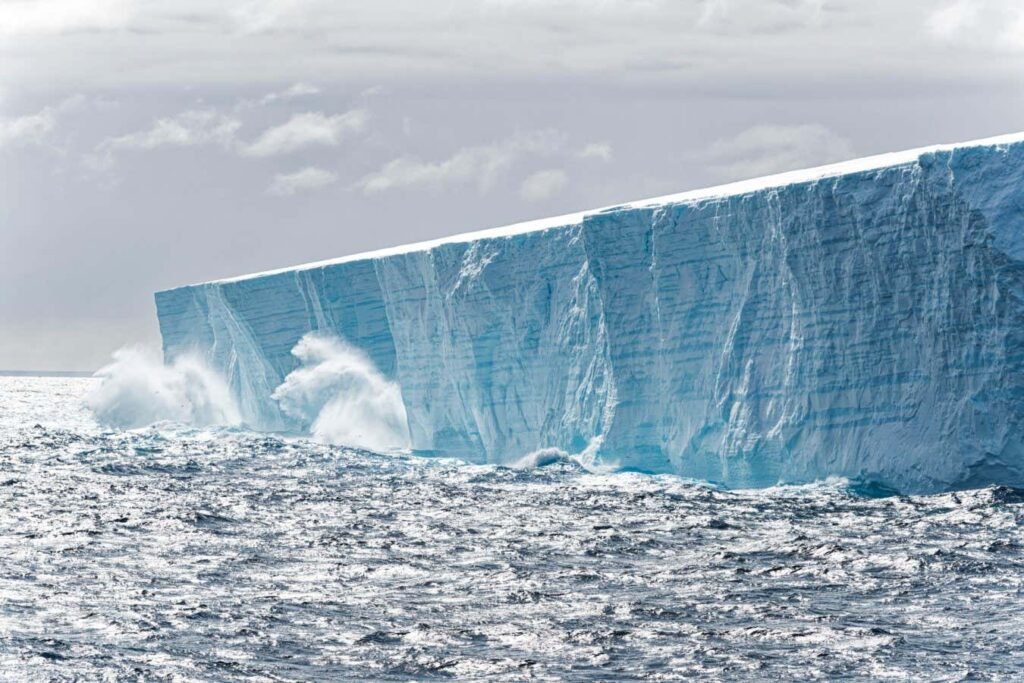
Bubbles trapped in Antarctic ice were used to estimate past temperatures
aldiami/Andreas Alexander/Alamy
Humans have already caused about 1.5°C of warming since the start of the industrial revolution, according to new estimates based on temperature data extracted from air bubbles trapped in ice.
Measurements of human-caused global warming generally use the period 1850 to 1900 as a pre-industrial baseline, when temperature records began. 2024 is almost certain to be the first year average temperatures rose by more than 1.5°C above this baseline. This single-year figure is influenced by naturally occurring factors such as A strong El Niño eventwhich global temperature rose.
After removing this natural variability, scientists estimate that humanity alone has caused 1.31°C of warming since the industrial revolution. But by 1850, the industrial revolution was already underway, with fossil fuel engines in use all over the world.
Andrew Jarvis at Lancaster University and Piers Forster At the University of Leeds, both in the UK, they set out to establish a new pre-industrial foundation using data from Antarctic ice core samples. The pair analyzed the composition of air bubbles trapped in ice cores to establish atmospheric carbon dioxide concentrations between AD 13 and 1700, before humans had any significant influence on atmospheric temperatures. They then used this CO2 data to simultaneously establish global average temperatures, assuming a linear relationship between CO2 and temperature rise.
Using this new pre-1700 baseline, humanity caused 1.49°C of warming by 2023, meaning the 1.5°C level “has now come into effect,” the team wrote in a paper announcing the findings. “We’ve provided a scientifically defensible way to get a pre-industrial baseline from which we’re measuring warming,” Jarvis told reporters at a news conference.
Jarvis says the new method could also help reduce uncertainty around temperature estimates based on the current 1850-1900 baseline used by the Intergovernmental Panel on Climate Change. Using ice core data to establish a baseline of 1850-1900, the team says humans have caused 1.31°C of warming. This is in line with existing central estimates, but the range of uncertainty is much reduced, the team said.
“The problem with only looking at surface temperature observations is that the farther back in time they go, the more certain they become,” says Forster. “We can be much more confident that we are now around 1.3°C than before.”
Jarvis and Forster hope that their new method will be accepted by scientists and policymakers as the primary way to judge humanity’s progress toward global climate goals. “I think there’s still an opportunity for the policy community and the science community to rethink the pre-industrial baseline,” Jarvis said. “We know there is warming in the 1850-1900 calculation, because that is not just the beginning of the industrial revolution. We’re providing a way out to operate on a more scientifically sound baseline.”
However, the new method may not be for the future. The linear relationship between CO2 concentrations and global temperature may become distorted as climate change progresses, for example, if we trigger the so-called Turning points in the Earth’s systems which cause a jump in warming events.
The new method also doesn’t change the effects of climate change that are felt on the ground, says Forster. “The impacts we’re experiencing today – the people who died in Spain and these hurricanes – the impacts are the same if you call that 1.3°C above pre-industrial levels or 1.5°C above pre-industrial levels. . The effects are impacts.’
Richard Betts The Met Office, the UK’s weather service, said the new method “provides a clear and simple way of providing up-to-date estimates of the current level of human-caused global warming”. This is partly because it is able to make a “real-time” estimate of human-driven warming, rather than relying on a 10-year running average like current estimates.
He says the method will be useful in giving policymakers a more up-to-date picture of the current level of warming, but warns that changing the baseline used in the assessments could be seen as “moving the targets” for climate action. “Even without changing the baseline, it is clear that current warming is much closer to 1.5°C than expected using the outdated 10-year average,” he says.
Topics:

